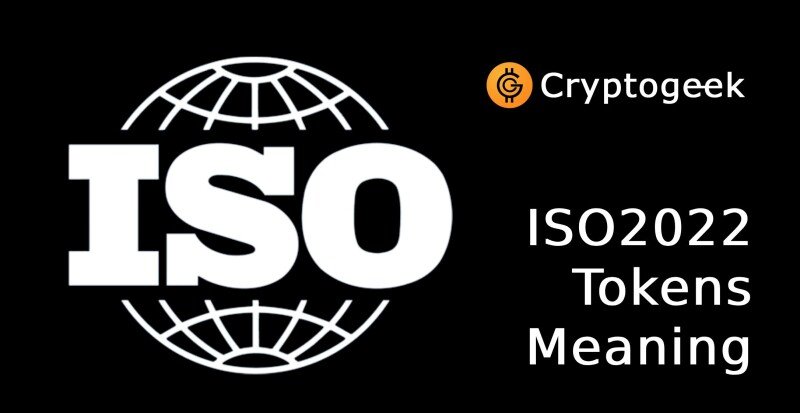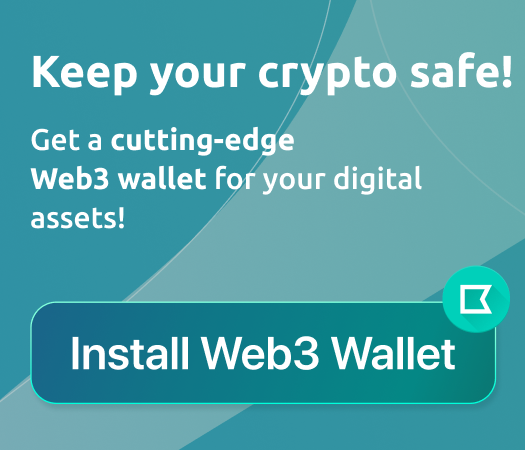ISO2022 Tokens: What They Are and Why They Matter


ISO2022 tokens - a term that has stoked curiosity in the cryptoverse. You’ve probably seen the term being talked about in tweets, blog articles, or YouTube videos. But do such tokens even exist in the form of ISO2022 tokens, and if so, what are they all about? There is no official category within blockchain standards that is referred to as "ISO2022 tokens." The term is inaccurately attributed to the term ISO 20022, the financial messaging standard for the world. In this article, we will clear the confusion, outline how ISO 20022 is used in traditional finance, and how some cryptos are attempting to comply.
Contents
- What is ISO 20022?
- Why Are Cryptocurrencies Involved?
- Misconception Around “ISO2022 Tokens”
- Examples of Crypto Projects related to ISO 20022
- The Role of ISO 20022 in the Financial Infrastructure
- Does the Integration of ISO 20022 Exist in Reality?
- Regulatory Considerations
- Market Hype vs. Reality
- Conclusion
- FAQs
What is ISO 20022?
Let us start from the basics. ISO 20022 is a standardized means of sending and receiving financial messages. The International Organization for Standardization (ISO) developed the system in an effort to replace older message transmission systems like SWIFT MT.
In short, ISO 20022 is the common language of finance. It makes transactions faster, more accurate, and more informative. The banks and payment networks of the world are implementing ISO 20022 to make international payments seamless and less error-prone.
Even though the name of the specification is “20022,” this is not because of the year 2022. The number is simply the standard identification code.
Why Are Cryptocurrencies Involved?
That's where the fun begins. Crypto enthusiasts believe that blockchain tokens will play a part in the world's payment systems of the future - if they are compliant with the ISO 20022 standard.
The assumption is that certain digital assets could be interoperable with the ISO 20022 and could end up being used by banks or financial networks in settlement and messaging. There isn't, however, an official “ISO 20022 token list” that is supported by SWIFT or ISO. The concept is mostly used in the analysis of investors and speculatory discussion.
Notwithstanding, certain of the projects in the cryptosphere have endeavored to be interoperable or accommodate the ISO 20022 infrastructure, whether through collaboration or through design.
Misconception Around “ISO2022 Tokens”
The phrase “ISO2022 tokens” is most likely a typo or confusion with “ISO 20022 tokens.” ISO 2022, with a zero, is actually a reference to an entirely different item—a legacy computing character coding standard.
So all such crypto content referring to “ISO2022 tokens” likely is attempting to refer to ISO 20022, not ISO 2022. You should make the correction so that individuals are not confused with similarly-sounding terms.
Examples of Crypto Projects related to ISO 20022
Even though there isn't a definitive register of those ISO 20022-compliant cryptocurrencies, certain of the tokens are frequently mentioned in internet forums owing to their design focus, banking ties, or advantage.
Let us take a couple of them:
XRP (Ripple)
Ripple has been an active collaborator with central banks and financial institutions in offering payment solutions based on blockchain. RippleNet is designed with interoperability, and XRP is also presented as a contender for ISO 20022 compatibility because of Ripple's engagement in the use of cross-border messaging.
Ripple entered the ISO 20022 standards group in 2020, joining the shortlist of blockchain companies that have an official seat at the table.
XLM (Stellar)
Stellar is focused on fast, cheap cross-border transfers and is therefore compared to Ripple. Stellar's architecture is compatible with remittances and pay-outs in real time. Stellar is not a member of the official ISO, but such infrastructure could, in theory, interoperate with ISO-based messaging infrastructures.
XDC (XDC Network)
The XDC Network is an enterprise-ready hybrid blockchain that is used in trade finance. It was referred to as being ISO 20022-ready in some literature and marketing collateral. XDC is regularly referred in speculative lists of the next financial infrastructure tokens along with XRP and XLM.
ALGO (Algorand)
Algorand is a high-performance blockchain with rapid finality and is also efficient. It has been used in tokenized asset platforms and in central bank digital currency pilots. Some suggest that its architecture would be compatible with the goals of ISO 20022 but is not a member of the standards group per se.
IOTA
IOTA is designed for machine-to-machine communications and has been prototyped in digital identities and supply chain scenarios. Some people are of the opinion that its data structure and architecture make it a potential candidate for compatibility with ISO 20022, but so far, that is only speculation.
The Role of ISO 20022 in the Financial Infrastructure
ISO 20022 is gaining the status of the default messaging standard of high-value payments globally. With SWIFT, SEPA, Fedwire, and others embracing the standard, financial messages will be able to convey more structured and richer data.
For blockchains to be within that ecosystem, they may need to:
- Encourage message formatting according to ISO 20022
- Interoperability with banking APIs and the compliance frameworks
- Offer safe, traceable transaction details
This doesn’t mean crypto projects must become ISO 20022-compliant to succeed. But compatibility could improve trust and usability in regulated environments.
Does the Integration of ISO 20022 Exist in Reality?
One must be realistic. While the majority of the crypto enthusiasts will see ISO 20022 as a gateway to mass adoption, central banks, regulators, and commercial banks implement such things. Crypto nets will lay the ground for compatibility but how many will make their entry into the mainstream payment systems is anybody's bet.
All the same, involvement in pilot programs, sandboxes, or enterprise trials could grant long-term benefit to some tokens.
Regulatory Considerations
Any crypto project aiming to support ISO 20022 must consider:
- AML/KYC compliance
- Data security and privacy
- Auditable message
- Legal certainty of digital asset categorization
These will be the determining variables if a token or platform is truly going to operate in conjunction with traditional financial infrastructure.
Market Hype vs. Reality
ISO 20022 tokens are vastly promoted as the solution for sure banking adoption. This is wrong. There is no sure “switch” that is going to wave the wand and turn these tokens into reserve assets or payment rails.
The reality is nuanced. A number of projects are building matching financial communications, but that does not mean that they will be chosen for global implementation. Investors need to be selective and not be swayed by hype-fueled narratives with unproven backing.
Conclusion
ISO 20022 represents a true and meaningful evolution of the international finance communication paradigm. There is no such term as “ISO2022 tokens,” and even “ISO 20022 tokens” is a marketing phrase not a technical term. Some coins like XRP, XLM, and XDC may be developed to work within the environment of the ISO 20022 infrastructure, but that does not guarantee use or success.
The difference here, of course, is that of standardization vs. speculation. Crypto and traditional finance will, ultimately, meet, but integration will be fueled by policy, tech, and confidence, not token names.
FAQs
Is there a definitive register of ISO 20022-certified cryptocurrencies?
No. ISO does not keep a register of compliant crypto tokens. Whatever such register exists on the Internet is speculative and not sanctioned by ISO.
ISO 2022 vs. ISO 20022: How are they different?
ISO 2022 is a character set for text that is a legacy, not related to finance. ISO 20022 is a standard for financial transaction messages.
Are XRP and XLM ISO 20022 compliant?
The most directly related is XRP due to the official association of the Ripple organization with the ISO 20022 group. XLM is not officially accredited but is mentioned in some contexts.
Can blockchain networks become part of the infrastructure of ISO 20022?
Theoretically, yes. But they would need to interoperate with banks and conform to stringent demands for compliance, security, and standardization.
Will the introduction of ISO 20022 increase the cost of certain tokens?
Not always. Long-term use is better for compatibility, but price action is influenced by multiple variables such as speculation, regulations, and trend in the marketplace.







Voici encore aucun commentaire. Soyez le premier!